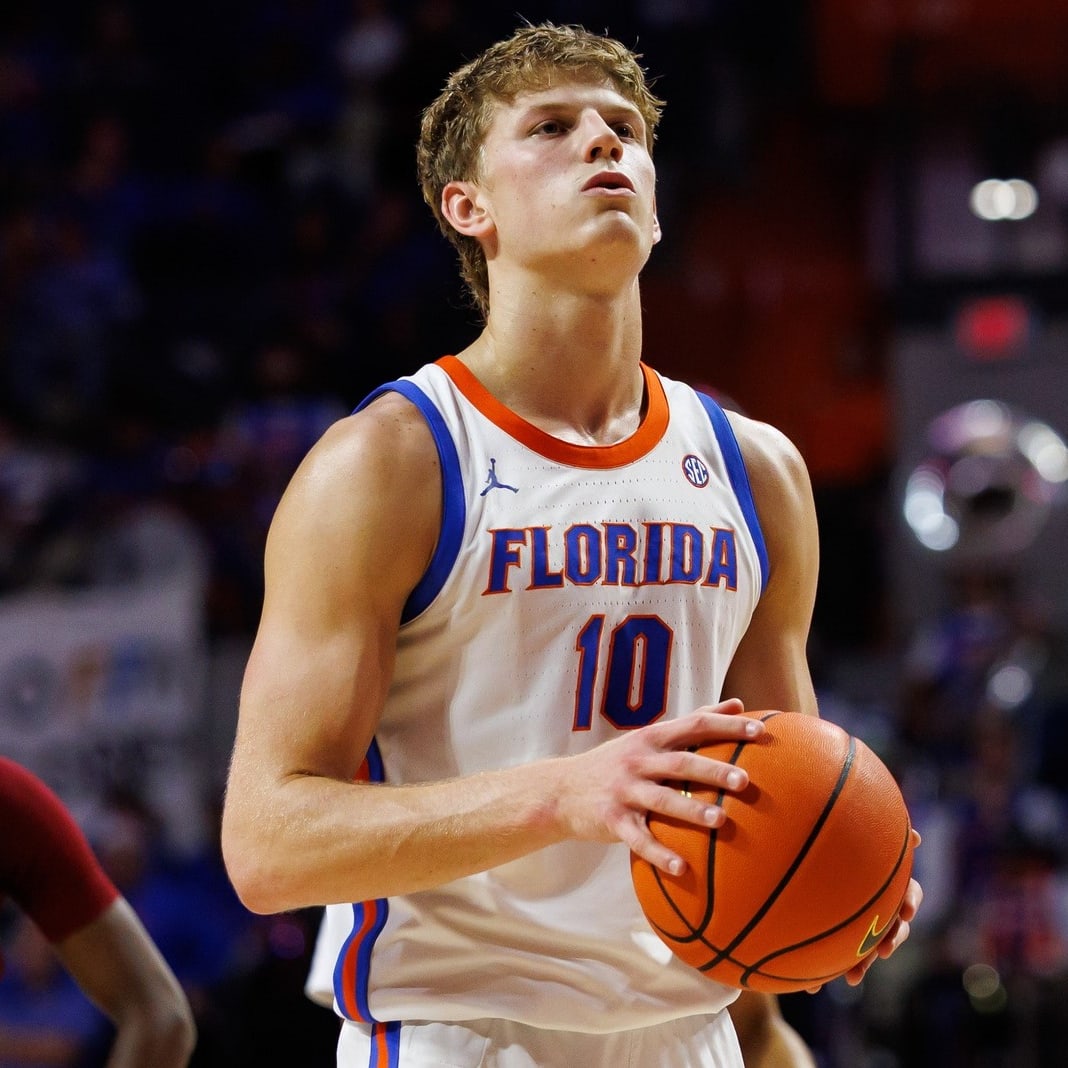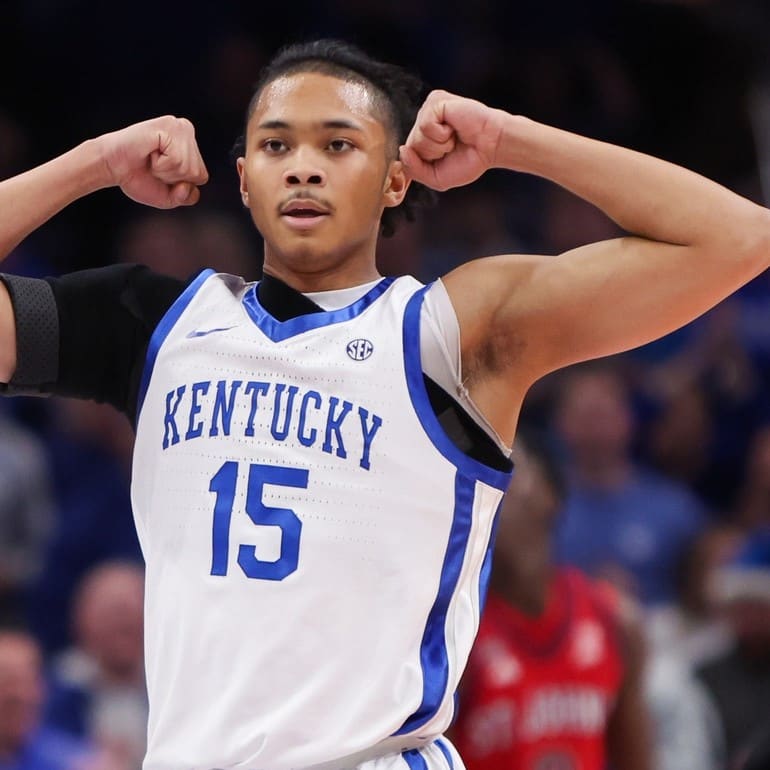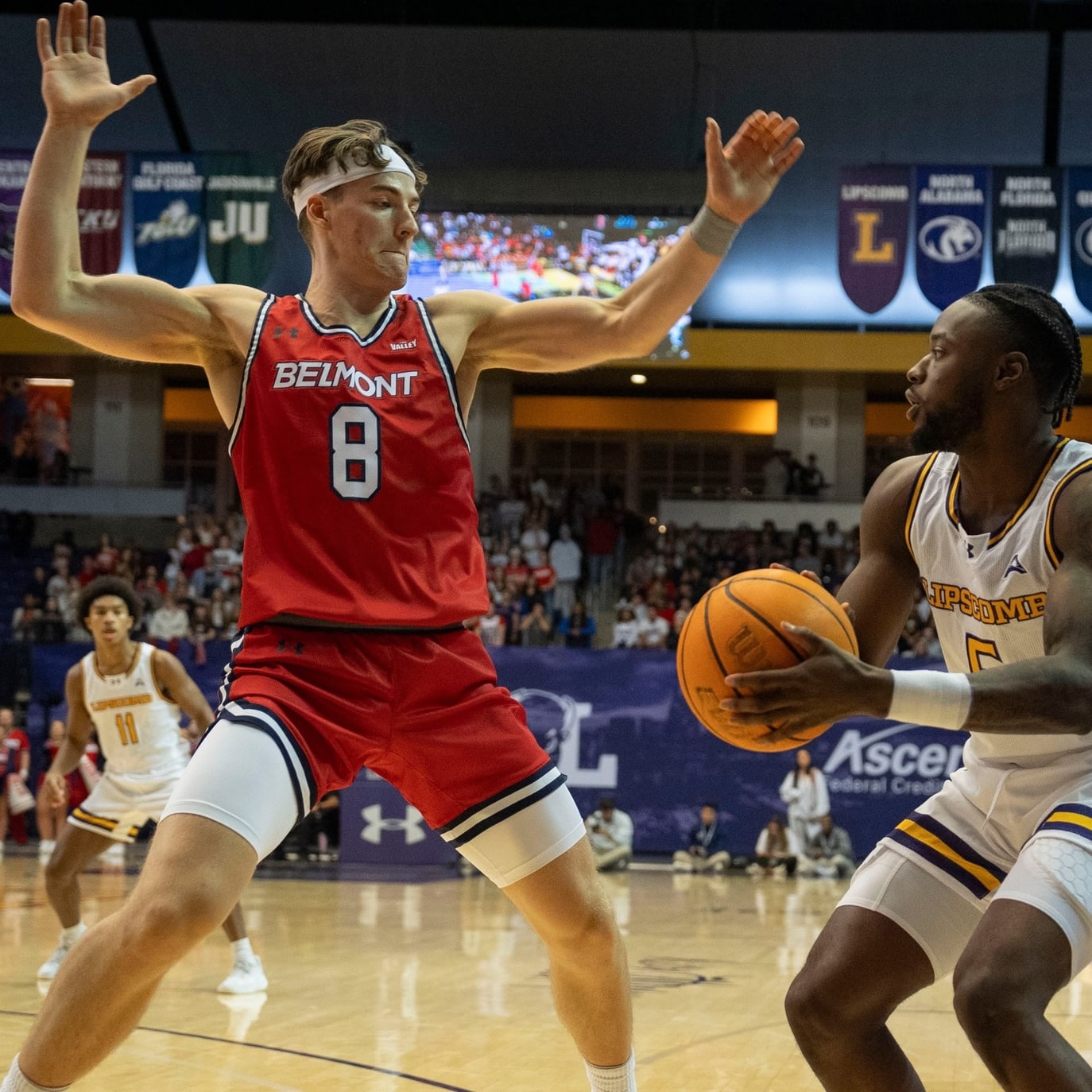For a live, updated bracket throughout the week check out our RotoWire Bracketology page.
I've written a lot about Bracketology and the NCAA committee over the years. Inevitably, something the committee does this Sunday won't make sense, and the public will go crazy about it, only to forget what they were talking about a week later. It's March Madness and in the end, whatever the committee does is final.
So, how will they decide the final few bubble spots between MWC and Big Ten teams? How will Gonzaga and St. Mary's be seeded? With the help of some key metrics, I'll try to find a few answers ahead of Selection Sunday.
St. Mary's: NET 10, 25-7 overall, 2-3 Q1, 7-2 Q2, two Q3 losses, BracketMatrix projected 5-seed
Disclaimer: I wrote this before St. Mary's was demolished by Gonzaga on Tuesday.
The Gaels are a talking point every season because head coach Randy Bennett games the system in non-conference play. They don't play any really bad teams and a lot of their non-con wins are against solid mid-majors at home (Oral Roberts, North Texas, Hofstra). Of course, they also lost home games to New Mexico and Colorado State, which in turn boosted the MWC, but that's another story.
I think St. Mary's is good, but is it a top-10 team in the country? Probably not. It will put teams through the grinder, similar to recent Virginia squads, but it also has feasted on WCC teams all season and probably doesn't have the talent to make a Final Four run or maybe even Sweet 16.
 San Diego State: NET 16, 23-6 overall, 4-5 Q1, 5-1 Q2, no Q3/4 losses, BracketMatrix projected 5-seed
San Diego State: NET 16, 23-6 overall, 4-5 Q1, 5-1 Q2, no Q3/4 losses, BracketMatrix projected 5-seed
In case you've forgotten, the Mountain West Conference was thought to be good last season and finished 0-4 in the tournament. That's been fresh in my mind with more late-season MWC hype, so I looked through some resumes and found the best non-conference wins for the top four teams.
SDSU: Ohio State on a neutral court (in Maui)
Utah State: Oral Roberts at home
Boise State: Texas A&M on a neutral court
Nevada: Sam Houston State at home
Of extreme importance to my argument, Texas A&M was not good early in the season and was even ranked outside of the top 70 of NET at one point. The only non-conference Q1 win for the Mountain West's top four teams was against Texas A&M. And as said above, New Mexico and Colorado State both beat St. Mary's, who is ranked in the top-10, with its best win coming against San Diego State.
Sense a trend?
 Utah State: NET 21, 23-7 overall, 1-4 Q1, 8-1 Q2, two Q4 losses, BracketMatrix projected 11-seed
Utah State: NET 21, 23-7 overall, 1-4 Q1, 8-1 Q2, two Q4 losses, BracketMatrix projected 11-seed
Let's take this to the bubble where Utah State has moved because of good metrics. Similar to most MWC teams, the Aggies didn't play a high-level opponent in non-conference play and most of their best wins are at home outside of non-conference win against Washington State (NET 69) on a neutral court.
Is the entire MWC gaming the system so their wins against each other mean more than we think? Probably.
I'm not saying it's wrong because they're simply working things in their favor when the cards are already stacked against them playing in smaller conferences. But these outliers have to be taken into account when blindly using NET and the Quadrant system.
I strongly dislike Michigan, but you can argue the Wolverines have a similar resume.
 Michigan: NET 54, 17-14 overall, 3-11 Q1, 5-2 Q2, one Q4 losses, BracketMatrix projected OUT of bracket
Michigan: NET 54, 17-14 overall, 3-11 Q1, 5-2 Q2, one Q4 losses, BracketMatrix projected OUT of bracket
The deciding factor on the bubble could come down to the metrics. In the Mountain West Conference, which has multiple teams on the good side of the BracketMatrix bubble, most teams have a Strength of Record worse than the metrics indicate. That's because SOR is what a team has done, not what it could do.
My favorite thing about these MWC resumes is that Oral Roberts is considered the best win for a few of them, mainly because its NET ranking is 38, which is considerably better than KenPom's 55 (they jumped 12 spots after beating NDSU in the Summit final). Of note, the Golden Eagles have one Q1/Q2 win and 19 of their 26 wins are in the final quadrant.
Instead of talking about the bubble further, I'll take the same approach with 1-seeds where Purdue and UCLA are the main discussion for the final spot.
 UCLA: NET 4, 27-4 overall, 7-4 Q1, 8-0 Q2, no Q2/Q3/Q4 losses, BracketMatrix projected 1-seed
UCLA: NET 4, 27-4 overall, 7-4 Q1, 8-0 Q2, no Q2/Q3/Q4 losses, BracketMatrix projected 1-seed
 Purdue: NET 5, 26-5 overall, 9-4 Q1, 7-1 Q2, no Q3/4 losses, BracketMatrix projected 2-seed
Purdue: NET 5, 26-5 overall, 9-4 Q1, 7-1 Q2, no Q3/4 losses, BracketMatrix projected 2-seed
Purdue has better non-conference wins (Gonzaga, Marquette, West Virginia, Duke) than UCLA (Kentucky, Maryland), but the Bruins don't have a loss outside of Quad 1. The Boilermakers have one more loss and it's in Quad 2. The Bruins have two fewer wins in Quad 1. The Boilers have a better strength over schedule overall and in non-conference play.
The margins are thin between the two teams and it'll come down to what the committee cares most about.
In the end, they may just decide seed based on region, giving UCLA the No. 1 seed in the West and Purdue the No. 2 seed in the Midwest, away from Kansas in the East.
Metrics prior to games on Wednesday, March 8
For a live, updated bracket throughout the week check out our RotoWire Bracketology page.












































